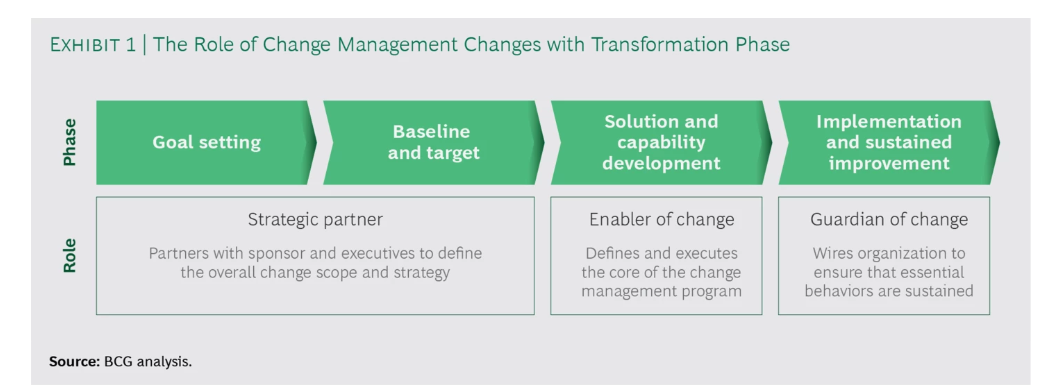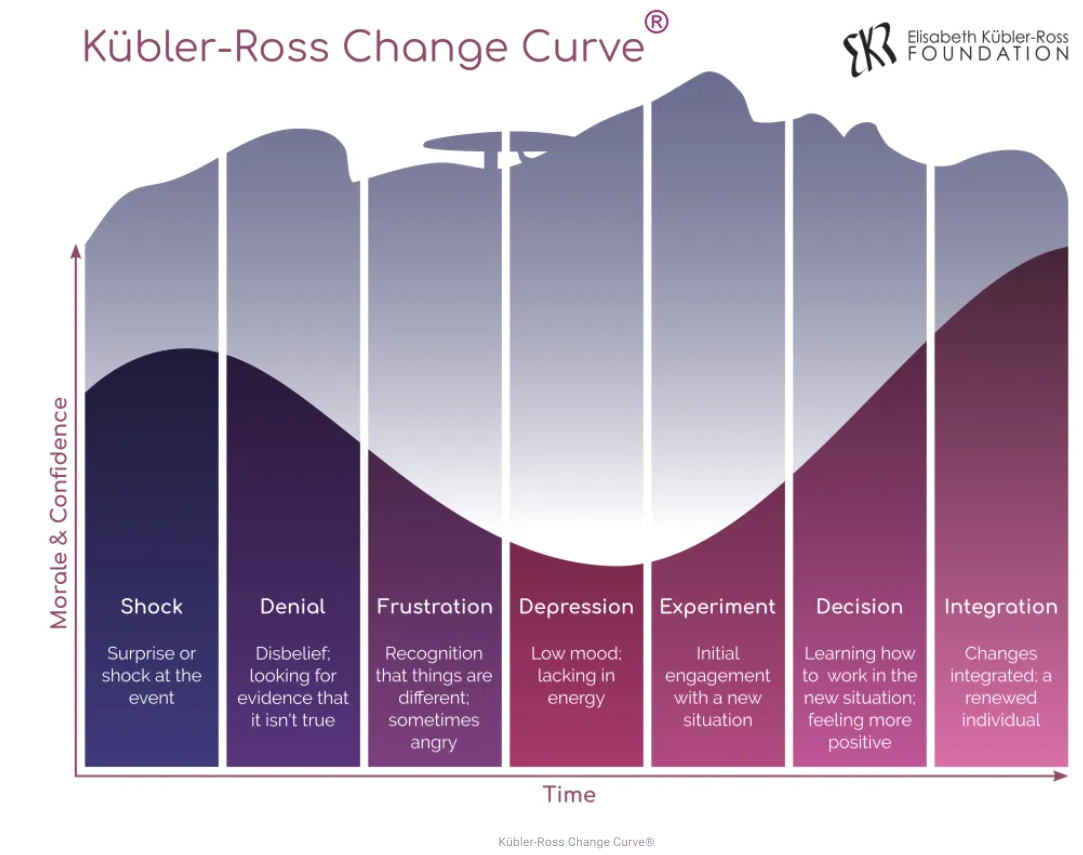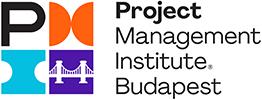September 11 2024 at 01:00AM
Change management in Project management
When you hear the word “change”, what is the first thing you associate change with?
A journey from A to B to become better, to have better results, to improve a behaviour, a situation.
Below there are couple of famous quotes on change to give you a better idea of what change could mean in different contexts:
“The measure of intelligence is the ability to change.” Albert Einstein
“Everyone thinks of changing the world, but no one thinks of changing himself.” Leo Tolstoy
“Education is the most powerful weapon which you can use to change the world.” Nelson Mandela
Change management within organizations is used at different levels and have different impact on organization’s processes and benefits, whether we speak of organizational change management, change management at project level or change management as a stand alone process in the Service value chain (related to ITIL framework).
Prosci (professional plus science = Prosci) organization founded in 1994 and focusing exclusively on change management, is differentiating between change management at the project level and change management at the organizational level in the following way: for the project level, they are providing the definition: “the application of the structured process and set of tools for leading the people side of change to achieve a desired outcome on our project”, whereas for the organizational level, the definition is: “A leadership competency for enabling change within the organization and a strategic capability designed to increase the change capability and responsiveness”.
Organizational change management
For a change to be successful there are couple of aspects to be taken into account: organization’s environment, people, long term objectives and strategy, type of change: based on economic value or based on organizational capability.
In the theory of change, organizational change management is dependent on individuals, their reaction and awareness to change, their resistance to change and consequentially the adoption and sustainability of the change in an organization.
Leadership of organizations need to be aware of these theoretical aspects of change management, prepare and guide their employees through the change, while later on maintain the benefits of change for the entire organization.
The phases of such transformation where change management plays a critical role is depicted below:

Kübler-Ross Change Curve
One of the frequently used models to explain the prerequisites of a successful change is the model developed by Dr. Elisabeth Kübler-Ross in 1969: The 5 Stages of Grief, later on know as the Kübler-Ross Change Curve.
In this model, there are presented five stages of emotional response to change, their sequence not being linear highlights the complexity of human behaviour faced with change, while “the path to acceptance and adaptation is often a dynamic and iterative process” (Elisabeth Kübler-Ross Foundation, 2024).
Individual may experience these stages in different order, one time or multiple times, beginning with shock when the novelty of the change is perceived as a shock, when they are struggling to understand the magnitude of the change and its implications.
The denial stage refers to the time when people although aware of the change and its impact, they still do not want to face the consequences, being a protective mechanism. At this stage, people still consider they can revert to the state before the change, to their old ways.
The frustration stage is characterized by irritation, feeling of being unable to cope with the change, self-doubt in the one’s capability to handle the change.
The depression stage can repeat throughout the process, exposing deep feelings of sadness, hopelessness. It is also the time when the people are at their lowest in their emotional struggle and they cannot see a way out or a purpose for their existence.
During the experimentation stage, people discover new mechanisms to handle the change, recover their trust in their own capabilities and try to see the new state from different perspective, adapting to this new reality.
This adaptation is also a feature of the decision stage when people make conscious decisions about how they handle the change and how they will continue in the new state.
The final stage, the integration stage provides the time for integrating these new decisions into daily practices as people learn to live with the consequences of the change, adjusting their ways.

ADKAR model
Another popular model to study and understand organizational change management is the ADKAR model developed by Prosci founder, Jeff Hiatt, after analyzing the change patterns from over 700 organizations.
The ADKAR model is strictly related to how people perceive and understand change, guiding people through the change process.
The name is an acronym for the dimensions of the model:
- awareness of the need of the change – Change management teams along with the leadership need to address any possible questions on the change, reasons for change, possible benefits and outcomes.
- desire to participate and support the change – Everyone in the organization need to be actively involved in the adoption of the change, understanding its advantages rather than to be forced to adopt the change.
- knowledge on how to change – Leadership role is critical in providing training and knowledge to employees in order to be well equipped on how to adopt to change, how to contribute to the change from their role and function.
- ability to implement required skills and behaviours – Employees do not only have the knowledge on how to adopt the change, but they are also confident on their skills and capabilities, can make their own decisions, find the right metrics to measure performance and adjust processes as needed.
- reinforcement to sustain the change – When the change is completely implemented, its benefits must continue for the organization and therefore it needs to be monitored to see if its outcomes are indeed the predicted ones. Also employees need to be encouraged to follow the new way of work or processes so that change is sustainable.
Kotter’s 8 steps change model
The model developed by Dr. Kotter, a Harvard Business School professor, after having analyzed for decades how leaders were implementing strategies within their organizations, is another well known model used for organizational changes (Kotter Inc, 2024).
It is based on 8 steps meant to guide organizations in the change management in a variety of situations.
The 8 steps are the following:
- Create a sense of urgency – Leaders need to inspire people to take action or an opportunity and feel enthusiastic about the envisioned future.
- Build a guiding coalition – Independently of the position and title, the change management team needs to be committed and guide organization through the change.
- Form a strategic vision – Organizations need to get the buy-in for the change and its benefits, creating a common vision for the future state.
- Enlist a volunteer army – Every change needs early adopters and believers in the outcome of change so those can lead the change and guide others in the adoption of change.
- Enable action by removing barriers – Reluctance to change is a major blocker so people need to know why the change is needed, what the benefits of change are and how their state would be improved. Communication and breaking down silos are also important in driving the change.
- Generate short-term wins – Proving the benefits of change in a shorter time frame can win the buy-in and convince the more reluctant contributors, teams feelings more energized.
- Sustain acceleration – The change needs consolidation so the outcomes are consistent across organizations so the leaders need to find ways to involve employees in the processes and encourage them to provide their feedback on change.
- Institute change – The change needs monitoring, performance measurements and adjustments of processes to maintain the benefits and shift behaviours, contributing to the overall organizational culture. Change must be embedded into organization’s policies, leaders need to provide training to make sure employees adhere to the new ways of working.
Change management at project level
Within the project management context, the change management is defined in the following way by the Project management institute: “Change management is a comprehensive, cyclic, and structured approach for transitioning individuals, groups, and organizations from a current state to a future state with intended business benefits” (PMI, 2013, p.6).
In an earlier article from 1983, the entire Project management function was defined in relation to change management and its outcome as a transformation of state: “Project management is the management of the change process required to achieve that end target, within certain time and cost parameters” (Morris & Delapp, 1983).
And following this concept, the project management activities were concentrating to drive the change, in a very similar way to the organizational change management theories explained previously in this article:
- Define the change objective.
- Define a strategy and plans to achieve that objective.
- Creating a project management group to effect the change.
- Installing a control process to monitor progress.
- Managing the project by implementing the above four steps.
In the work published by PMI, in the earlier PMBOK editions especially, the change management function at the project level has been concentrated to deal with any change that may intervene on the project and may impact the outcome of the project, hence the need for a control change process (integrated change control process) to handle changes, their impact, dependencies and approval or rejection flows.
However when we speak about change management at project level, we need to be aware of the organizational change management because the stakeholders’ reactions to change need to be managed efficiently (building awareness, fighting resistance to change, sustaining the change effects) would need to be considered independently of the type of change raised on the project.
The integrated change control process is what defines how Project manager and stakeholders should deal with change in a consistent way: from the moment a change is identified, impact assessed, followed through an approval flow, implemented and recorded in the project artefacts, taking further corrective or preventive actions.
For every change, there should be a highlighted and agreed manner in which the change is analyzed in terms of impact: scope baseline, timeline, resource requirements, cost estimates, effects on other teams or business units.
A change control board or change approval board should be responsible for reviewing the change and associated documentation, deciding on the approval or rejection of the change. Stakeholders such as Senior managers, Project sponsor, Project manager should all be part of the CCB, depending on the nature of change, customer should also be involved in the approval process. (PMI, 2013).
Why change management may fail and lessons learned
Even though change management is a crucial part of a successful project, there are examples of bad practices which do not emphasize enough the importance of change management: companies decide to allocate resources to form change management units at the last minute and fail to clarify the role of change management team, other companies spend too many resources on the communication plan, failing to oversee the impact of change and work on the behaviours/reactions to change, while other companies even decide to outsource the change management function or assign it to junior employees (Kirchhoff et al., 2020).
In order to counterattack such practices, companies should pay attention on building change management function by making it visible and intertwined with other functions or departments, allowing it to take decisions on the direction of transformation initiatives, develop couple of much needed behavioural trait for managing changes effectively (training to be provided not only to the ones engaged directly with the change management function but to all employees who would be impacted by a transformation program).
For changes to be successful, leaders are playing a crucial role: they need to be the change agents, supporting the change management team, explaining the “why” of change, anticipating the resistance to chance and empowering employees to understand and accept the change by leading by their own example first.
Leaders also need to support the role played by they PMO structures in the change management: governance for the processes and way of working, engagement of executives and formal reporting by setting up regular meetings to increase transparency, guidance on timelines, adoption schedule and metrics to measure the successful adoption of change, removal of obstacles or issue remediation, PMO being “often the “glue” that binds together the necessary data, conversations, and decision making among senior executives, initiative leaders, and the line organizations” (Keenan et al., 2012)
References:
- Prosci - https://www.prosci.com/change-management
- Elisabeth Kübler-Ross Foundation. (2024). 5 Stages of Grief, https://www.ekrfoundation.org/5-stages-of-grief/change-curve/
- Kotter Inc. (2024). The 8 steps for leading change, https://www.kotterinc.com/methodology/8-steps/
- Project management institute. (2013). Managing change in organizations: A practice guide
- Project management institute. (2013). A guide to Project management body of knowledge - 5th Edition, 2013
- Kirchhoff, D., Kumar, A., Lutz, M., Messenbock, R., Meyding, G. (2020) The elements of a good change management function - https://www.bcg.com/publications/2020/elements-good-change-management-function
- Morris, P. W. G. & DeLapp, S. E. (1983). Managing change through project management. Project Management Quarterly, 14(2), p.60–70.
- Keenan, P., Powell, K., Kurstjens, H., Shanahan, M., Lewis, M., Busetti, M. (2012) Changing Change management: A blueprint that takes hold https://www.bcg.com/publications/2012/change-management-postmerger-integration-changing-change-management



